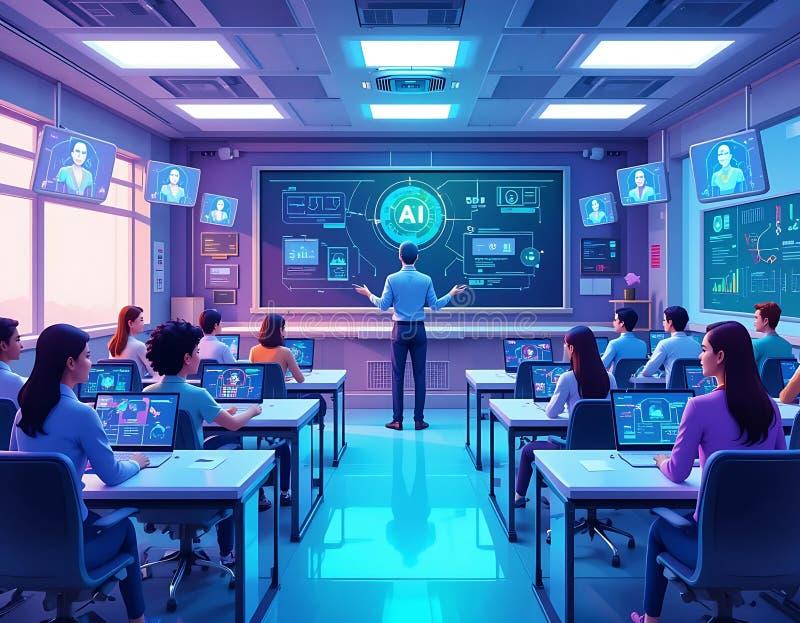How to Train Teachers for AI-Integrated Classrooms: Essential Strategies for Modern Education
Artificial Intelligence (AI) is revolutionizing education, transforming the way students learn and teachers teach. As AI-integrated classrooms become increasingly common, the need for educators to adapt and thrive in this evolving landscape becomes critical. But how can schools ensure their teachers are equipped with the skills and confidence needed to harness AI technologies for better student outcomes?
This comprehensive guide delves into how to train teachers for AI-integrated classrooms. We’ll explore essential strategies, practical tips, benefits, and real experiences, equipping your educational association to lead the way in modern education.
Why Training Teachers for AI-integrated Classrooms is Crucial
AI’s potential to personalize learning, automate administrative tasks, and drive data-informed instruction is immense. However, without skilled teachers, the promise of AI in education cannot be fully realized. Effective teacher training for AI ensures:
- Seamless integration of AI tools into daily teaching practices.
- Increased confidence and proficiency among educators.
- Maximized learning outcomes and student engagement.
- Reduced resistance to technology-driven change.
- Improved adaptability to future innovations in edtech.
Key Challenges in Training Teachers for AI Integration
- Lack of Familiarity: Many teachers feel overwhelmed by new technologies and need accessible training resources.
- Resource Constraints: Budget, time, and access to AI tools can inhibit effective program rollout.
- Ethical Concerns: Teachers require guidance on AI ethics in education, such as data privacy and bias mitigation.
- Change Management: Shifting pedagogical paradigms demand ongoing support, not just one-off workshops.
Essential Strategies to Train Teachers for AI-Integrated Classrooms
1. Start with Foundational AI Literacy
- Provide basic introductions to AI concepts (machine learning, natural language processing, etc.).
- Break down complex jargon into teacher-friendly language.
- Highlight real-world educational applications to demonstrate relevance.
2. Offer Hands-On, Interactive Workshops
- Incorporate practical training sessions where teachers explore real AI tools, such as adaptive learning platforms or AI-driven assessment software.
- Use classroom simulations to model AI integration scenarios.
- Encourage collaboration with peers to foster a supportive learning habitat.
3. Incorporate Online Courses and Microlearning
- Develop or leverage online professional development modules for flexible, self-paced learning.
- Deploy bite-sized microlearning content covering specific AI technologies or teaching strategies.
4. Provide Ongoing Coaching and Peer Support
- Pair less-experienced teachers with AI-savvy mentors.
- Create Professional Learning Communities (PLCs) focused on AI-integration best practices.
- Hold regular check-ins to address challenges and share successes.
5.Embed Ethics, Data privacy, and Digital Citizenship
- Host training sessions on AI ethics for educators.
- Raise awareness about student data protection, consent, and troubleshooting AI biases.
- Provide resources on teaching digital citizenship in the context of AI-enabled learning.
6. Personalize Teacher training
- Assess individual teachers’ AI proficiency and tailor training pathways accordingly.
- Set clear, achievable goals for AI integration within their subject areas.
7. Evaluate and Iterate
- Solicit continuous feedback from teachers about training effectiveness.
- adapt training programs based on challenges, technology updates, and evolving school needs.
benefits of Effective AI-Integrated Teacher Training
- higher student Achievement: Teachers can create personalized, dynamic learning experiences that drive results.
- Enhanced classroom Efficiency: Automation of grading and administrative tasks frees up instructional time.
- Increased Teacher Satisfaction: Professional growth and confidence reduce stress and burnout.
- Future-Ready Schools: A culture of innovation positions educational institutions at the forefront of modern education.
Practical Tips for Implementing AI Teacher Training Programs
- Conduct a Needs assessment: Survey staff to gauge current comfort levels and target training areas.
- Engage School Leadership: Secure buy-in and ongoing support for professional development initiatives.
- Leverage Free and Open Resources: Many organizations offer free AI in education resources, including tutorials, toolkits, and webinars.
- Pilot New AI Tools: Start with small-scale pilots before scaling up school- or district-wide rollout.
- Celebrate Early Wins: Publicize success stories and recognise teachers who excel in AI integration.
Case Studies: Real-World AI teacher Training Programs
- Finland’s National AI Education Initiative: All teachers nationally are encouraged to complete the “Elements of AI” online course, resulting in widespread foundational AI literacy.
- Singapore’s AI Literacy Framework: Multi-tiered training begins in pre-service education, continuing with targeted in-service PD and micro-credentials for AI proficiency.
- US School Districts: Forward-thinking districts partner with edtech companies to provide in-person coaching,sandbox environments,and AI tool pilots for teachers.
First-Hand Experience: Insights from Educators
“Before our district’s AI training,I felt nervous about using new technology. Through hands-on workshops and a great mentor program, my approach to teaching has completely transformed. Now, my students are more engaged than ever!”
– Maria R., High School Mathematics Teacher
“The best part of learning about AI in education was collaborating with other teachers. Sharing tips and troubleshooting together made the transition much smoother.”
– Thomas L., Elementary School Science Teacher
FAQs on Teacher Training for AI-Integrated Classrooms
- What are some common AI tools used in classrooms?
Popular tools include adaptive learning platforms, AI-based grading software, chatbots for student queries, and AI-driven formative assessment tools.
- Do teachers need prior tech expertise?
No. Training should be designed for all skill levels, starting with foundational AI knowledge and progressively introducing advanced applications.
- How can schools measure training effectiveness?
Use surveys, classroom observations, student outcome analytics, and teacher self-assessments to measure progress.
conclusion: Empowering Educators for AI-Driven Education
Preparing teachers for AI-integrated classrooms is not just about technology—it’s about empowering educators to create more effective, equitable, and engaging learning environments. The combination of targeted AI teacher training, ongoing support, and a collaborative culture ensures both teachers and students thrive in the age of AI.
By following these essential strategies and fostering a mindset of innovation, schools can stay ahead of the curve and unlock the full benefits of AI in education. Invest in your teachers today—because the future of learning is AI-powered, and it starts with them.

